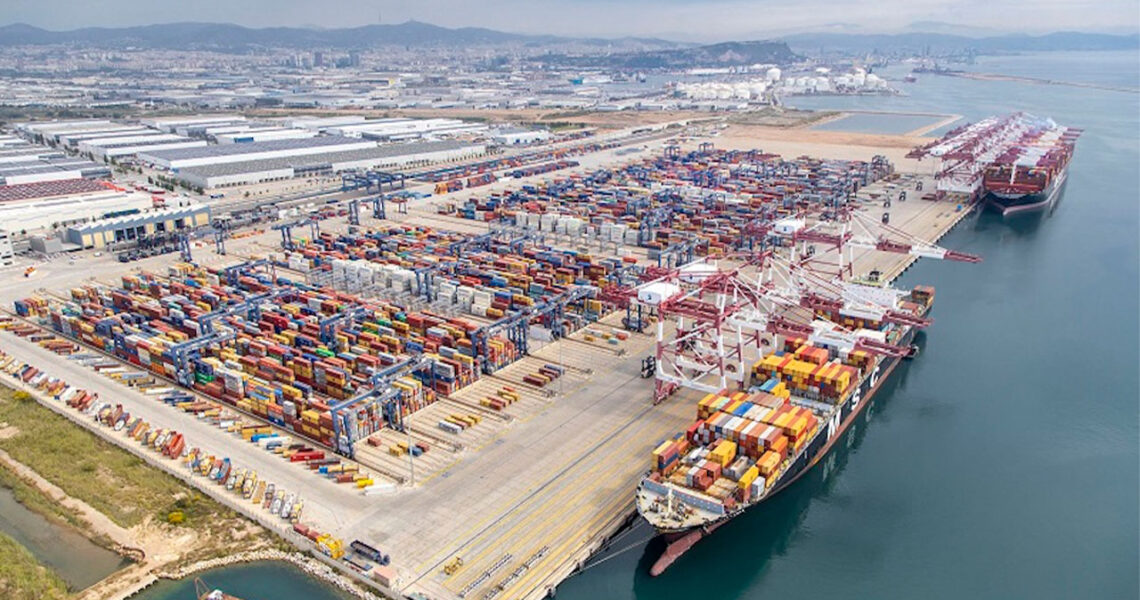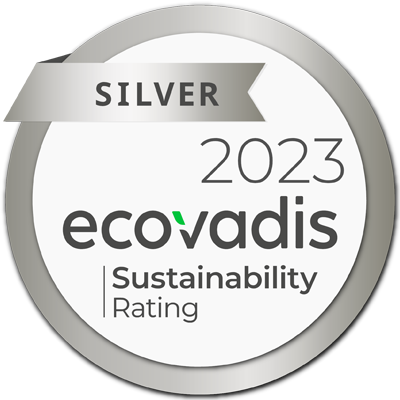- Project: The Port of Barcelona’s Muelle Sur Container Terminal (former Terminal Catalunya S.A – TERCAT).
- Location: Barcelona, Spain
- Date: 2011 to present
- Application: Automated Stacking Cranes (ASC).
- Requirements: High Speed application – 270m/m and 24/7 use of the cable in harsh/demanding conditions.
- Tratos Product: Tratosflex-ESDB® – medium voltage rubber insulated and sheathed drum reeling cables
- Specified by: HPH Terminals
- Direct Client: Konecranes
- Final Client: HPH Terminals
Tratos and Konecranes cooperation
TRATOS received the first order for its TRATOSFLEX ESDB reeling cables at the end of 2011 from the OEM Cavotec for the Konecranes first original one-over-five 36 Automatic Stacking Cranes (ASC) running at speed of 240 m.p.m. Since then, TRATOS has enjoyed the trust and support on continuous phases with equal engineering till date, result of its good performance and service.
Tratosflex ESDB, was specifically designed for high-speed reeling. Tratosflex features a unique internal cable design, with the structure tightened against the internal relative movement. This prevents the cable from twisting and leading to possible breakage – extremely dangerous when reeling at speeds up to 300m/m. As a result of this sophisticated, reliable design, Konecranes regularly team up with Tratos on Automation projects at Ports & Terminals involving ASC or E-RTG running at high speeds.
Did you know these about BEST?
Officially inaugurated in Sept. 2012 and named after BEST (Barcelona Europe South Terminal), this project was one of the most relevant ports ever built by the referential HPH (Hutchinson Port Holding) group. Currently, it has 11 STS and 54 ASC, in 27 automated blocks. Handling more than 2.300.000 TEU per year, this state-of-the-art terminal performs some of the best productivity rates in Europe and across the Mediterranean.
In December 2005 the Port Authority of Barcelona launched a public tender for the construction and operation of the new Muelle Prat container terminal, located in the new phase of the Port de Barcelona, being the culmination of a stage of development that the Port de Barcelona initiated with its Director Plan in 1990. Hutchison Port Holdings Group and Grupo Mestre submitted a joint bid, combining the Group’s experience and Grupo Mestre’s local tradition in port operations at the Port de Barcelona.
In May 2006, the Port Authority of Barcelona awarded the concession contract to the bid submitted jointly by Hutchison Port Holdings and Grupo Mestre. In November 2006, the Muelle Prat concession was granted and the developing phase of the terminal was initiated by Hutchison Port Holdings, since 2011 the only remaining investor.
The construction and development of the terminal is a combination of experience and implementation of modern technology resulting in a great qualitative and quantitative leap in the design of container terminals.
In mid-2012 the new semi-automated terminal was named Barcelona Europe South Terminal (BEST) and entered a new phase of testing. BEST was officially inaugurated on September 27th, 2012.
Since the launch of the terminal operations have far exceeded expectations and standards on which its design was based, making BEST a worldwide reference terminal. Hence, Hutchison Port Holdings decided to implement the semi-automated system to other terminals among the group.
With BEST’s effective and successful operations and the recognition received among its customers and users, Hutchison Port Holdings decided to continue developing BEST with a new phase of expansion to the terminal.
Tratos supports sustainable developments of ports infrastructure
Tratos is very pleased to supply its high-quality cables to the ports around the world. In doing so, Tratos supports the global endeavours of port authorities in upgrading and improving their operational capabilities, which contributes to the sustainable development of ports and achieving the 17 UN Global Goals.
Participating in this project, Tratos has supported:
#Envision2030 Goal 3: Good Health and Well-being
- By 2030, substantially reduce the number of deaths and illnesses from hazardous chemicals and air, water and soil pollution and contamination
#Envision2030 Goal 8: Decent Work and Economic Growth
- Achieve higher levels of economic productivity through diversification, technological upgrading and innovation, including through a focus on high-value added and labour-intensive sectors
- Improve progressively, through 2030, global resource efficiency in consumption and production and endeavour to decouple economic growth from environmental degradation, in accordance with the 10-year framework of programmes on sustainable consumption and production, with developed countries taking the lead
#Envision2030 Goal 11: Sustainable Cities and Communities
- By 2030, significantly reduce the number of deaths and the number of people affected and substantially decrease the direct economic losses relative to global gross domestic product caused by disasters, including water-related disasters, with a focus on protecting the poor and people in vulnerable situations
#Envision2030 Goal 14: Life Below Water
Targets
- By 2025, prevent and significantly reduce marine pollution of all kinds, in particular from land-based activities, including marine debris and nutrient pollution
- Minimize and address the impacts of ocean acidification, including through enhanced scientific cooperation at all levels










